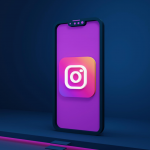Ever dreamt of turning your passion into a paycheck? It’s not as far-fetched as it might seem. In the digital age, platforms like YouTube offer a golden opportunity to monetize what you love. Whether it’s cooking, gaming, or teaching, there’s a space for you.
In this article, I’ll share insights on how to harness the power of YouTube and beyond to earn from your passion. We’ll delve into practical strategies, tips and tricks that have worked for successful creators. It’s time to stop dreaming and start earning. Let’s get started, shall we?
Understanding Monetization: Platforms and Opportunities
Monetizing on YouTube
Making money on YouTube isn’t about luck; it’s rooted in strategically applying certain techniques and understanding the platform’s monetization policies. For instance, getting accepted into YouTube’s Partner Program (YPP) holds prime importance. Under this program, creators can earn from ads on their videos, channel memberships, and YouTube Premium revenue. Acceptance into the YPP hinges on achieving a minimum of 1,000 subscribers and 4,000 watch hours in the previous 12 months. Channel content should also comply with all of YouTube’s guidelines. Even more, ad-friendly content often earns higher revenues.

Beyond ad revenue, YouTube offers more channels for increasing income. For instance, Super Chat, a feature that allows fans to pay for comments that stand out in chat streams during live broadcasts. Channel memberships, on the other hand, grant fans access to exclusive content, emojis, and badges for a subscription fee. There’s always the merchandise shelf, allowing you to sell your products directly from your videos.
Exploring Beyond YouTube
While YouTube appears to be the go-to choice for content creators seeking monetization, it’s not the only platform to consider. Other video sharing platforms like Vimeo also offer monetization models. They allow creators to sell or rent videos directly to their audiences. Unlike YouTube, Vimeo doesn’t require any minimum subscriber or watch hour thresholds to start earning.
Then we have Patreon, a subscription-based platform that lets creators receive recurring funding directly from their fans or patrons. Patreon isn’t restricted to video content, making it a viable choice for all sorts of creators including writers, podcasters, and artists.
In a similar vein, Twitch, primarily a platform for gamers, provides several monetization avenues. These range from ad revenue, channel subscriptions, twitch bits (virtual goods that fans purchase and use for Cheering), to direct donations.
In essence, each platform comes with its own arsenal of benefits, and understanding each one’s policies and possibilities can help you maximize your earnings from online content creation.
Essential Tools and Resources for Content Creators
Success in the domain of online content creation and monetization, regardless of whether it’s on YouTube, Vimeo, Patreon, or Twitch, necessitates the right combination of equipment and software. Let’s delve into specifics under the next subheads.
Video Production Essentials
Delivering quality content consistently, therefore, begins with cutting-edge video production essentials. Here’s a curated list of must-have equipment:
- Camera: Opt for high-quality cameras that guarantee crisp and clear video output. For instance, Canon EOS 5D Mark IV, Sony Alpha A7 III, or Nikon D850 embrace state-of-the-art technology for superior output.
- Microphone: Improving audio quality imbibes a more professional feel in the videos. Consider investing in a decent mic, like the Audio-Technica ATR2100x-USB or the Rode NT-USB Mini.
- Lighting: Adequate and proper lighting plays a significant role in video aesthetics. For instance, Neewer Ring Light Kit or Fovitec Softbox Continuous Lighting Kit works wonders.
- Tripod: To stabilize the video and minimize shakiness, tripods, such as Joby GorillaPod or Manfrotto Compact Advanced, are indispensable.
Carefully consider your budget, content type, shooting location, and individual requirements before investing in these tools.
Must-Have Software for Editing
Post-production editing is instrumental in making the videos engaging and visually compelling. I’ve outlined the most crucial software below:
- Adobe Premiere Pro: This software, used by professionals globally, offers a wide range of tools and features for advanced editing.
- Final Cut Pro: An Apple product, Final Cut Pro offers a host of features tailored for high-end editing on Mac devices.
- DaVinci Resolve: Known for its advanced color correction and grading tools, DaVinci Resolve also caters to video editing and audio post-production.
- iMovie: For beginners or those on a budget, iMovie is a free yet powerful tool available on Mac devices.
Remember, each software comes with its learning curve. Be prepared to invest time in mastering these editing tools to create polished and engaging videos. It’s essential to balance out the competition and affirm your place in the broad world of content creation.
Building an Engaged Audience
Success in monetizing passion doesn’t simply rely on premium equipment or expert editing skills. It’s also about crafting content that resonates with the audience and building a loyal community around it. In spreading your artistic influence, audience engagement becomes the measure of your market influence.
Content Strategies That Work
For content creation, context and relevance reign supreme. I opt for a targeted approach, strategizing around audience interests, popular trends, and content avenues that haven’t yet been extensively explored. For example, if your passion lies in baking, focusing content on specialized niches such as gluten-free or vegan recipes can help attract a dedicated audience.
Moreover, I ensure to engage with viewers by encouraging audience participation. Asking for comments, generating polls, and initiating discussions about the video topic can go a long way. Holding live Q&A sessions, or creating video responses to viewer’s questions, not only keeps the viewers hooked but also enables them to feel more connected.
Leveraging Social Media for Growth
Beyond YouTube, other platforms like Instagram, Facebook, and Twitter could act as powerhouses for audience growth. Cross-promoting content on these platforms allows reaching broader audiences, further fuelling the growth of the YouTube channel. For instance, sharing behind-the-scenes snaps on Instagram, tweeting about upcoming videos, or discussing video themes on Facebook groups can generate hype even before the video hits YouTube.
Additionally, platforms like LinkedIn and Pinterest offer unique opportunities for content promotion, depending on the niche. Constantly staying active on these platforms and interacting with followers establishes not only an online presence but also a strong relationship with the audience.
However, one caution I’d bring to attention is the need for consistency. While diversifying to other platforms helps, YouTube still remains the main battlefield for gaining and maintaining the audience. So, keeping a regular uploading and interaction schedule on YouTube is still the best bet to build and grow an engaged audience.
Monetization Strategies and Techniques
Building on the previously discussed angles, I’ll introduce more facets of monetization that content creators can tap into. These involve ad revenues, sponsorships, merchandising, and crowdfunding. Understanding these diverse streams can diversify your earnings and provide stability in a notoriously unpredictable field.
Ad Revenue and Sponsorships
Primarily, ad revenue plays a significant part in my monetization strategies – displaying ads in and around videos facilitates passive income. YouTube’s ad revenue sharing model, for instance, contributes to a substantial section of the earning. On the other hand, direct sponsorships offer a more predictable and often more substantial income source. Aligning with brands that resonate with my video content and audience preferences, I negotiate terms and create sponsor-specific content.
For instance, if my channel operates around tech gadgets, working with a smartphone brand for product reviews serves as a relevant sponsorship.
Merchandising and Crowdfunding
Beyond ad revenues and sponsorships, merchandising presents an often-untapped monetization potential. Creating custom merchandise around my brand – be it clothing, accessories, or digital products – allows for a direct avenue to capitalize on audience loyalty. For instance, in a sustained cooking channel, curated recipe books become a relevant merchandise idea.
Simultaneously, crowdfunding platforms like Patreon offer a fan-based income stream. Offering exclusive content or rewards in return for fans’ support helps not only in retaining but also in nurturing the audience relationship. For example, early access to content, customized merchandise, and one-to-one interactions serve as appealing rewards in a Patreon campaign.
Legal Aspects of Monetization
Expanding on the array of monetization methods via YouTube, Twitch, Vimeo, and Patreon, it’s vital to comprehend legal aspects that play into this profit journey. Earning through ad revenues and sponsorships, assembling an exclusive merch collection, or leveraging crowdfunding platforms, involves legal implications one can’t overlook.
Understanding Copyright Laws
Copyright laws factor prominently into content creation, including music, video, images, or written material. These laws protect the original work of an artist, granting the owners exclusive rights to display, distribute, or reproduce their work.
For instance, consider a YouTube tutorial video that uses a popular music track in the background. If the content creator doesn’t possess the proper license or permission from the music’s copyright holder, the video could be taken down or demonetized. Facing copyright infringement accusations not only impacts a channel’s reputation but also its monetization opportunities. YouTube’s Copyright Center and Twitch’s Copyright and DMCA (Digital Millennium Copyright Act) guidelines offer resources to understand and navigate these complex laws.
Navigating Contracts and Agreements
With the progression towards a more commercialized online space, contracts and agreements often form the backbone of monetization efforts, especially regarding sponsorships and merchandising. Diligent navigation of these legal documents takes center stage to prevent potential pitfalls.
For example, sponsor agreements generally outline the specifics of the partnership: the type and amount of content to be produced, exclusivity clauses, and term length. Not understanding or fulfilling these stipulations could lead to contract breaches, jeopardizing future monetization prospects. Similarly, merchandising deals often come with licensing contracts, specifying the use of copyright materials, brand logos, or design patents. Violation of these contracts could result in legal action. It’s critical to seek legal advice before signing these documents to ensure that they align with one’s monetization strategy while respecting the legal boundaries.
Through a solid grasp of copyright laws and careful contract navigation, creators can confidently monetize their passion, ushering in growth and sustainability for their online ventures.
Conclusion
So there you have it. Monetizing your passion isn’t just about making videos and hoping for the best. It’s a strategic process that involves understanding the platforms, the revenue streams, and the legal landscape. It’s about being smart with sponsorships, merchandising, and crowdfunding. It’s a game of navigating contracts and copyright laws, all while creating content that resonates with your audience. But remember, at the heart of it all, it’s your passion that drives this journey. So keep that flame burning bright. And with the right strategies, you’re not just earning online – you’re building a sustainable venture that can grow beyond YouTube, Vimeo, Patreon, or Twitch. Your passion is your power. Use it wisely.
 Boosting Engagement with Clickable Videos: Your Secret Weapon for Content Success
Boosting Engagement with Clickable Videos: Your Secret Weapon for Content Success  Shoppable Videos: 7 Interesting tips to Make the Most Out of This Trend?
Shoppable Videos: 7 Interesting tips to Make the Most Out of This Trend?  How Content Marketing Boosts Sales
How Content Marketing Boosts Sales  8 Good Interactive Instagram Story Ideas for Business
8 Good Interactive Instagram Story Ideas for Business  Maximizing ROI: Are Short-Form Videos the Future of Content Marketing?
Maximizing ROI: Are Short-Form Videos the Future of Content Marketing?